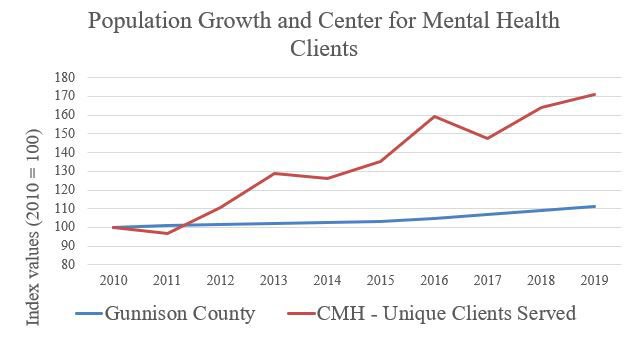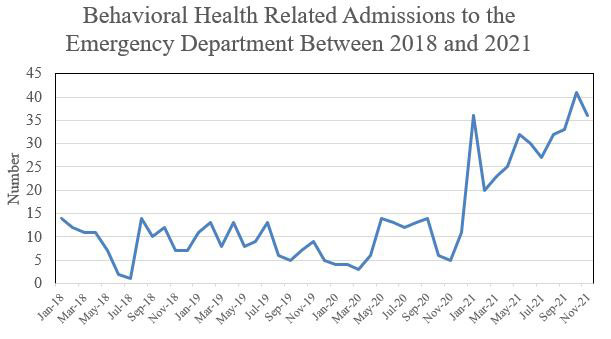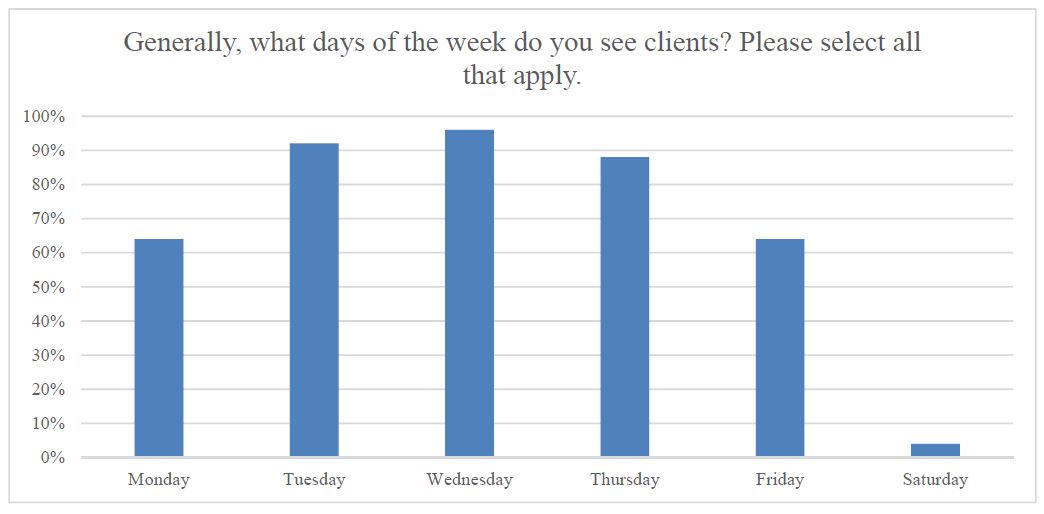May is Mental Health Awareness Month
In March, we first introduced the State of the Community 2022 Report commissioned by the Gunnison Valley Community Health Coalition. With our first blog post introducing the report, we helped define behavioral health. We also broke down the difference between underlying factors that contribute to poor behavioral health and the symptoms of poor behavioral health. In April, the Month of the Young Child, we tackled the early childhood education and childcare crisis we’re experiencing in Gunnison County.
May is Mental Health Awareness month. This month, we bring you a dive into some of the study’s findings about underlying factors that contribute to poor mental health, information about the rise in both incidence of mental health challenges and utilization of services, some information about providers and costs, and ways you can get involved.
While the State of the Community Report spelled out the connection between poor mental health and substance use and abuse in detail, we don’t go into that here in our overview. We’ll be covering that in a future look specifically at substance use in Gunnison County.
Underlying Factors
While the list of underlying factors contributing to poor mental health in mountain communities like ours is long, the State of the Community Report focuses on a couple major ones:
- Food Insecurity
- Housing Affordability
The Gunnison Country Food Pantry served about twice as many community members during the pandemic. While the Pantry is now serving fewer people than it was during that pandemic peak in 2020, the number of community members seeking the Pantry’s assistance is still significantly higher than prior to COVID. According to the report, “food insecurity is a psychosocial stressor that compounds mental illness.”
We all know that lack of housing affordability is putting a significant strain on families living in poverty in the Gunnison Valley. It’s also an added stressor for working class and middle-class families as population growth has outpaced the supply of housing, and the cost of land and building continues to increase at a rapid pace. In the report, researchers call out the lack of opportunity to pursue homeownership as being a big stressor on mental health locally. Our vision for a Gunnison Valley where everyone can thrive requires that people have the opportunity to put down roots and engage with our community. Homeownership is a pathway that allows people to do that.
Researchers found that individuals in “unstable basic needs situations were three times as likely to experience eight or more poor mental health days in the past month.” When we allow our community members to fall through the cracks, we run the risk of seeing the challenges we face as a community balloon further.
Not surprisingly, the stresses adults are experiencing in our community are also impacting our youth. When adults, particularly parents and teachers, are experiencing significant stress, that ripples through the youth population. Not only does it cause more stress among young community members, but, according to the report, it also makes young people less willing to reach out for help, compounding the challenges they face. We plan to do a future feature specifically looking at the struggles many local youth experience with their mental health.
Rise in Incidence and Utilization of Services
Increased challenges tied to food insecurity, lack of affordable housing, and coping with an unprecedented global pandemic correlate to an increase in the incidence of poor mental health in our community. However, due to historical stigma and other factors, the dramatic increase in the use of services in our community may be linked to an increase in awareness and utilization of services as much as it is to an increase in actual cases of people needing services.
Two major providers in the Gunnison Valley (the Center for Mental Health and the Gunnison Valley Health Emergency Room) have both seen a sharp increase in use of their services.

On this chart, the researchers show that, since 2010, the number of unique clients served by the Center for Mental Health has far outpaced population growth in the Gunnison Valley. Over that period, the number of unique clients served increased by 70%, nearly 7 times the rate of population growth.

In an even more recent snapshot of data, the sharp climb in behavioral health related admissions to the GVH Emergency Department is stunning. Between November 2020 and November 2021 alone, the number of behavioral health visits increased by over 200 percent. Of those admissions, mental health and suicide ideation combined represented about 20% of the visits.
In addition to seeing the increase in emergency department visits, GVH debuted a mobile crisis unit team in July of 2021, allowing providers to respond to individuals in crisis where they are, so this 200% increase doesn’t even capture the total increase of significant behavioral health incidents in the Gunnison Valley in 2021.
Neither the research team nor we can say for sure how much this growth is linked to people experiencing more challenges vs. people being more aware of and willing to access services. Regardless of the different factors leading to in the increase in usage, this increase is putting a strain on the already limited provider network in the Gunnison Valley.
Lack of Providers
One of the most impactful barriers to good mental health in our community is a lack of providers. As the State of the Community Report points out, the lack of providers manifests in a couple of different ways here in the Gunnison Valley. Like many rural areas, we don’t have as many providers as more densely populated areas. According to the report, statewide, the ratio of people to providers decreased from 417 to 1 in 2015 to 270 to 1 in 2021. In Gunnison County, we are catching up, but our ratio decreased from 738 to 1 to in 2015 to 430 to 1, so we still have a long way to go to catch up to the rest of Colorado.
In addition to our community being strained for providers, there are other barriers that make accessing care difficult, and those barriers are not the same for everyone. Many of our providers only see patients on weekdays from 9-5, making access to metal health services very difficult for people who work during the week. The overwhelming majority of providers locally are white women, which can be a barrier for people who aren’t white women and want to have a therapist who can better relate to their backgrounds. Very few of our providers practice in a language other than English. All of these barriers combine to make accessing services very difficult for many local residents.

Finally, it is often prohibitively difficult for private providers to accept common insurance plans locally. Both Gunnison Valley Health and CB State of Mind are working through ways to mitigate this challenge, but when so many of our community members are living below or on the bubble of the self-sufficiency standard, finding money in the budget to pay for mental health care is next to impossible.
How to Engage with this Issue
Peer support, engaging those with lived experience, and awareness are big themes that run through all aspects of the report. Looking out for our neighbors, checking in to see how people are doing and taking the time to listen to their responses, and being aware of how community members are vulnerable and how we can help are all ways that each of us as individuals can help out. COVID put extra stress on our mental health as a community due to our isolation. Helping our friends and neighbors feel less isolated is something we can all do.
On a more collective level, nonprofit organizations like CB State of Mind and the Gunnison Valley Health Foundation are doing a lot to break down stigma, provide access to services, and meet people where they are, literally and figuratively, to provide access to services. We have supported their efforts in the past and encourage you to join us.
Because providing access to all kinds of healthcare is more challenging in our rural setting, we join the writers of the State of the Community Report in encouraging our community to continue tackling some underlying factors, like housing and food insecurity, that contribute to poor mental health in the Gunnison Valley. Putting resources towards prevention can help keep our challenges from getting out of control.



